Boxer
Boxer is a dog breed developed in Germany in the 1800s. They were bred for working purposes, especially for cart pulling, livestock herding, hunting, and, also, for dog fighting. The Boxer was one of the first dogs used for police and military services (a pack carrier and messenger positions). By the 1900s, the Boxer was recognized as a great utility dog, show dog, and family pet.

Height:
21,5–25 in (53–63 cm)

Weight:
55–66 lb (25–30 kg)

Origin:
Germany

Life Expectancy:
8-12 years
Dog Breed Characteristics
The Boxer is a medium-sized, short-haired, muscular dog with a squarely proportioned body. They are quite large and muscular. They have a square head and can seem imposing and fearful, but their eyes give them away. You can see their friendliness, playfulness, and joy in their eyes.
The Boxer has a black mask on the face. Because of their dark brown eyes and wrinkled forehead, Boxers always have a curious look. Many of them have docked tails and cropped ears. If not cropped, the ears will hang down. It is a fairly “new” breed, but it is registered and recognized by most of the world’s cynology associations.
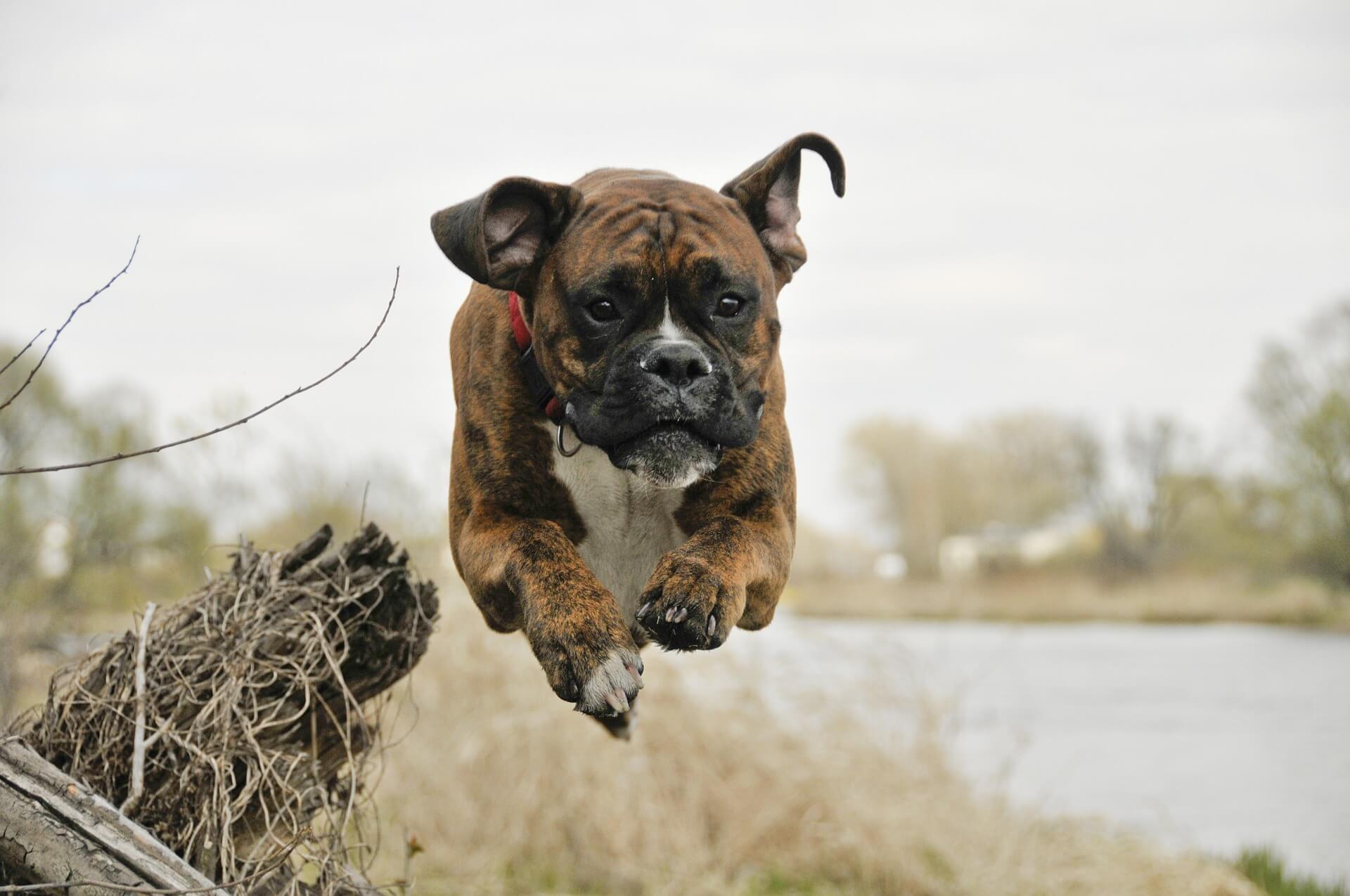
Coat and shedding
They shed seasonally, but their coat needs only occasional brushing, and it’s easy to maintain. The coat is shiny and comes in several shades of fawn and brindle. Boxers can have a recognizable marking called „flash“ where the chest, paws, or face are white. They are clean dogs, and they groom themselves, but they drool a lot. Also, most of them snore loudly!
FUN FACT: All or mostly white Boxers are not desirable because, genetically, white coloring is associated with deafness. Also, white markings covering more than one-third of the body are a disqualification in the show ring.
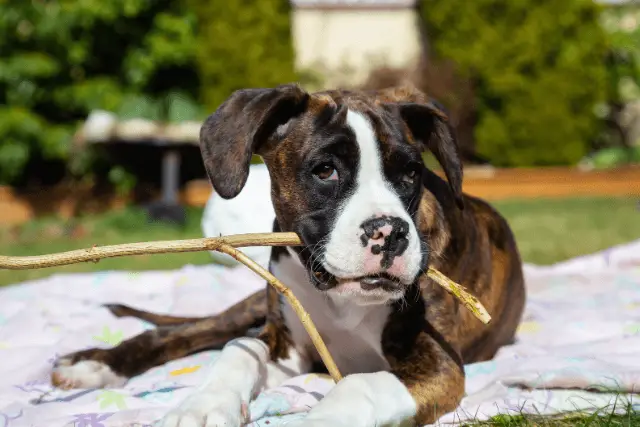
Temperament
The Boxer is an awesome human companion. The dog is energetic, intelligent, curious, outgoing, dedicated, and loyal. Most of them get along well with other animals, although, sometimes, males can be aggressive towards strange dogs or dogs of the same gender. They love children and are great playmates. They can be reserved towards strangers but are not aggressive.
The Boxer responds well to friendly people and will attack only when defending its family and home. Although they are big dogs, they are not meant to live outdoors. Their short hair doesn’t keep them warm in the winter, and their short nose doesn’t cool hot air efficiently in summer. This is why they need to be kept as house dogs.
Boxers are very loyal to their family and want to spend every minute of the day around their favorite people. If left alone for too long or kept away from their people, Boxers will become destructive and will destroy everything you own.
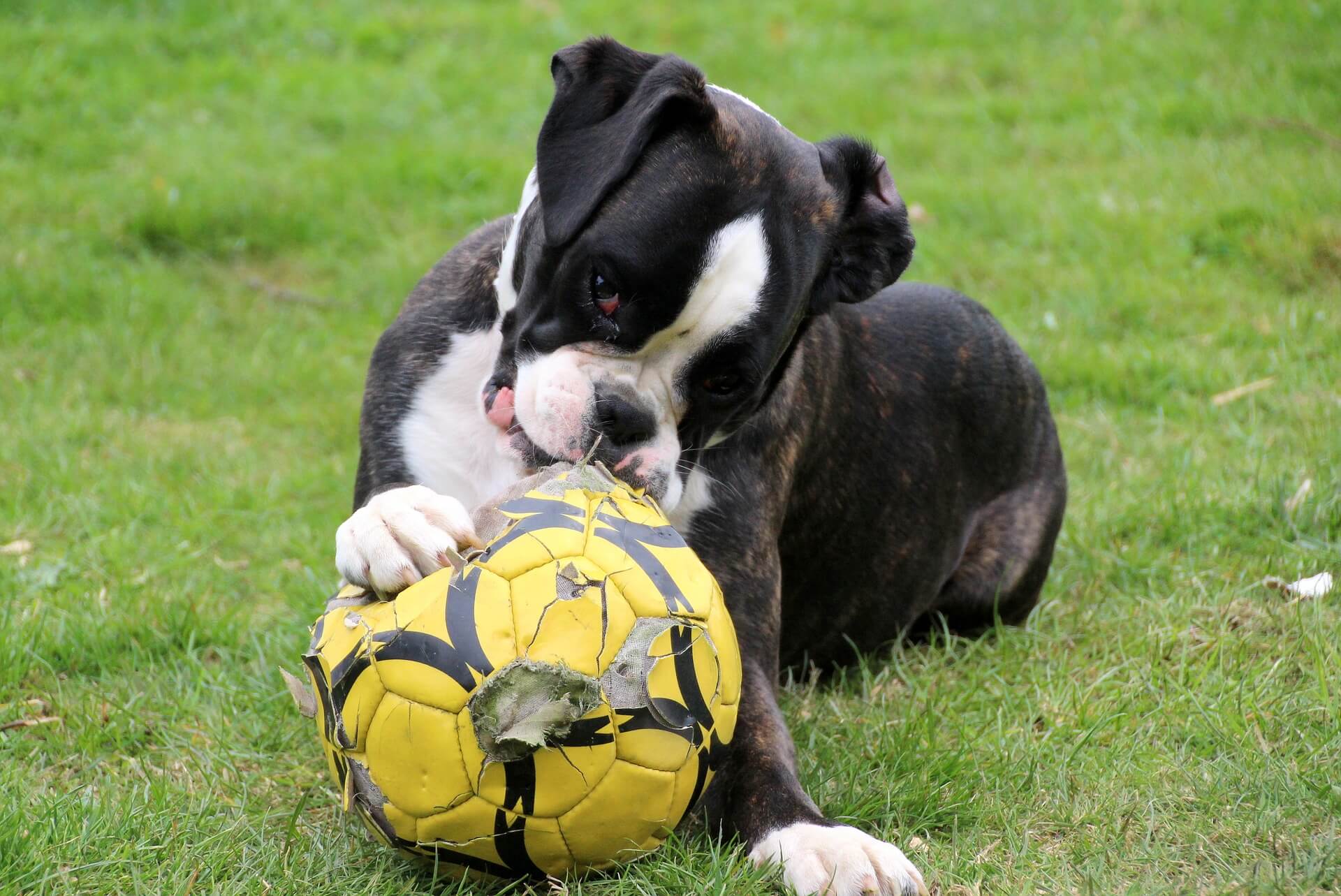
Boxers and children
These dogs are usually great with kids. They are patient and protective of them and have plenty of energy to play with them and not get tired. They are playful and full of energy, so you can be sure that your toddler will have a great playing partner. Never leave your dog unattended with your children, no matter what the breed in question is.
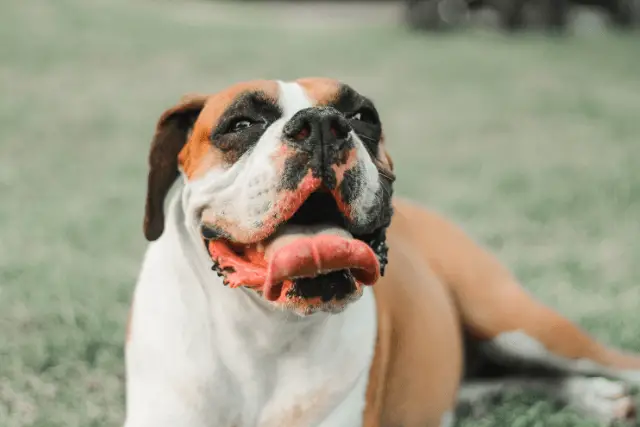
Boxers and other pets
These dogs can develop aggression toward other dogs, especially toward dogs of the same sex. That is why the process of proper socialization is of extreme importance. If properly socialized, they get along great with other dogs because of their childish character and playful nature.
They can also learn to get along with other animals if they are raised together.
Training
The Boxer has a lot of energy, so daily physical and mental exercise is essential. These dogs love to run, to fetch, and to play in general. They mature slowly and act like puppies for the first few years. This breed requires consistent training, starting from an early age. They respond well to positive reinforcement and will act out if handled too harshly.
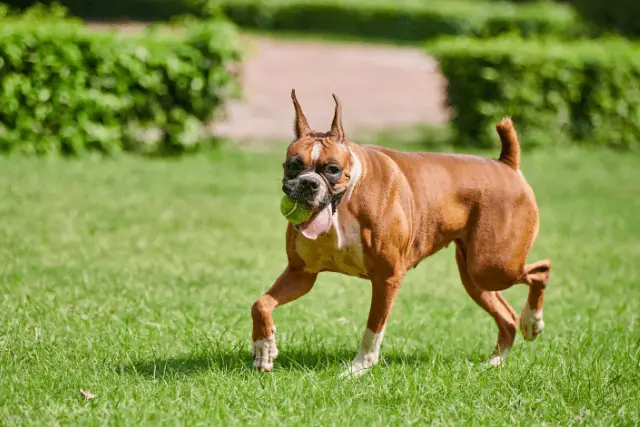
The best way to train a Boxer is to make it into a fun activity for him. Don’t forget to give your Boxer plenty of daily exercises because it is the best way to ensure good behavior.
Socialization
Socialization should be a huge part of your dog’s life, and you should start socializing your Boxer puppy the minute they arrive home. The process of socialization will make sure your dog develops in a well-balanced, well-behaved, and stable dog that will not create havoc in your life.
That means you should expose your new puppy to all sorts of different sights, sounds, situations, and people. That way, your puppy will learn how to properly react to new situations and you can make sure they will not become overly shy or, even worse - aggressive.
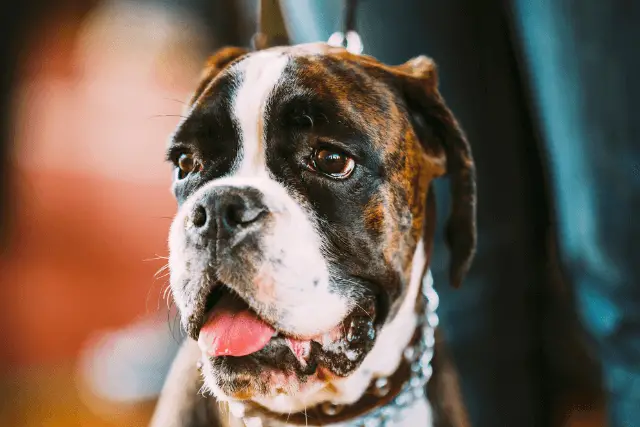
It is also very important to introduce them to other dogs and puppies but not until your dog receives all the necessary shots. Ask your Vet for advice or enroll your new puppy in a behavior class. Puppy behavior classes should have professional dog handlers and behaviorists that can be a great ally throughout your puppy's life.
FUN FACT: Because of their playful nature, a lot of energy, and the fact that they are considered fully grown at the age of three years old (which means that the Boxer has one of the longest puppyhoods in the world of dogs), the Boxer is often called the “Peter Pan” of the dog breeds.
Health issues
Boxers have an average lifespan of 8 to 12 years and are prone to more health problems than other dog breeds. So, if you are planning to get yourself a boxer, be prepared to pay big bucks for veterinary care.
More than any other dog breed, Boxers are prone to developing mast cell tumors, lymphoma, and brain tumors.
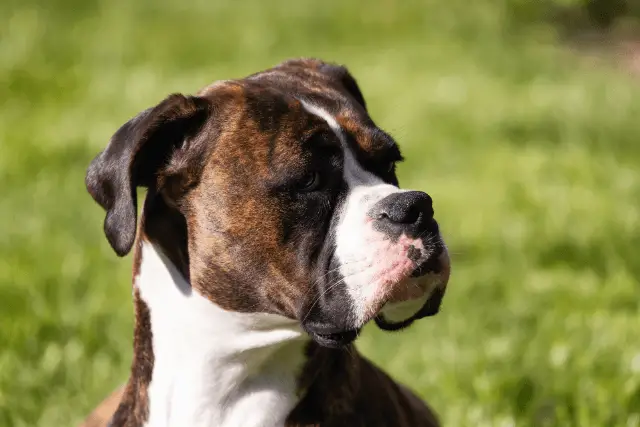
All and mostly white boxers can be sunburned and can develop skin cancer. Another common health condition in Boxers is Aortic stenosis/sub-aortic stenosis (AS/SAS). This is inherited, most common heart defect found in Boxers where there is a problem with aortas and heart pumping blood to the body that can cause fainting and sudden death.
Another health issue is Boxer cardiomyopathy (BCM). It is an inherited condition where the dog develops arrhythmia which can cause weakness, collapse, and/or sudden death.
Boxers are also prone to
- Hip Dysplasia,
- Hypothyroidism,
- Corneal Dystrophy,
- allergies, etc.
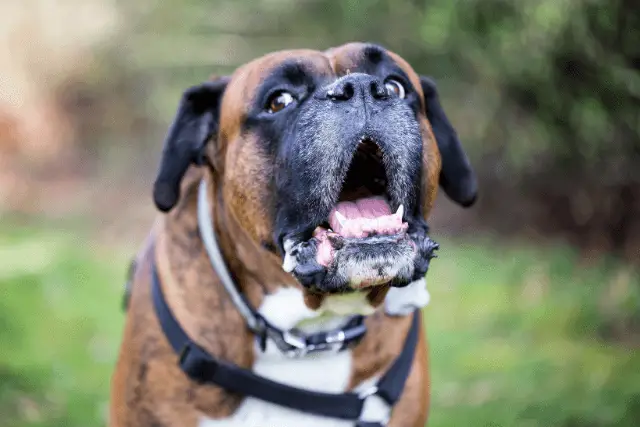
FAQ
Boxers can be amazing family dogs. They are energetic and playful, making them ideal for families with older kids that can play and run with the dog. They are also protective and can make great watchdogs and guard dogs.
Boxers are considered a fairly smart breed. They love having a job and being busy. Boxers can learn new things fairly quickly and are very food-motivated, so positive training methods will be fairly successful.
Boxers are often listed as one of the most dangerous dog breeds, but it doesn’t really deserve that label. They are powerful and protective, and without training and socialization, they can develop behavioral problems.
Boxers are not the easiest breed to train. They require plenty of patience and consistency, especially when they are young. They can easily get distracted, but if you invest plenty of time and use positive, food-based training methods, they can be well-trained.
Boxers are fairly clean and love to groom themselves, but they are relatively heavy shedders. Boxers have short, glossy coats whose hair might be difficult to vacuum. Brush them every couple of days with a slick brush.
The easiest way to make sure your Boxer calms down is to provide them with a healthy energy outlet. Make sure they receive plenty of exercises, walks, playtime, and training. A tired dog is a happy dog.
Boxers are not that different than other breeds when it comes to pooping. Their bowel movement will greatly depend on their eating habits, but, in general, they can poop 2-4 times a day.
Yes, Boxers are extremely affectionate and cuddly. They are a breed that develops deep and strong bonds with their owners, and they thrive on human interaction and connection.
Unlike many other dog breeds, Boxers are not one-person dogs. They can be loyal to the whole family or even a group of friends. They are protective, so if they consider a person to be inside their protection ring, they will be loyal.
Boxers have a unique way of showing affection - they stand on their hind legs and paw at the person they are trying to show affection to. They also show affection in a more traditional dog way - with cuddles and kisses.

Boxer breeders
If you're buying a Boxer puppy, find a responsible Boxer breeder who will show you health clearances for both puppy's parents. Health clearances prove that a dog has been tested for and cleared of a particular condition. Also, meeting one of the puppy’s parents is recommended to ensure that they have a nice temperament that you are comfortable with. When possible, meet the puppy’s siblings too.

Here at World Dog Finder we work exclusively with breeders of the highest standards and require them to send us the necessary documents that show us they are registered with the FCI and their countries’ cynology association.
World Dog Finder team

Updated at31.08.2023.
Breed History
This breed is a descendant of the old German Bullenbeisser, a crossbreed between the Bulldog and the Mastiff. Boxer’s ancestors were used for centuries for hunting, and they specialized in big game such as deer, wild boar, or even bears. Their main job was to bite and hold the prey while the hunters came. Slowly these dogs started moving towards other jobs and became mostly used for guarding duties by the German butchers.
The modern-day version of the breed was developed in the late 1800s by a German man named Georg Alt. Mr. Alt crossbred the old Bullenbeisser female with a local dog that wasn’t purebred. The litter that came to life had a small fawn-colored male that was named Lechner’s Box, and he is believed to be the first influence of the modern Boxer breed.
Lechner’s Box was inbred with his mother, and their breeder produced a female puppy called Alt’s Schecken. The German cynology authorities accepted her and registered her as “Bierboxer”. That female was then bred to an English Bulldog, and they produced a dog called Flocki. Flocki was the first dog to be registered in the German studbook, but it wasn’t until he won a dog show in Munich. That show had a specialty event only for Boxers, and Flocki achieved an overwhelming victory.
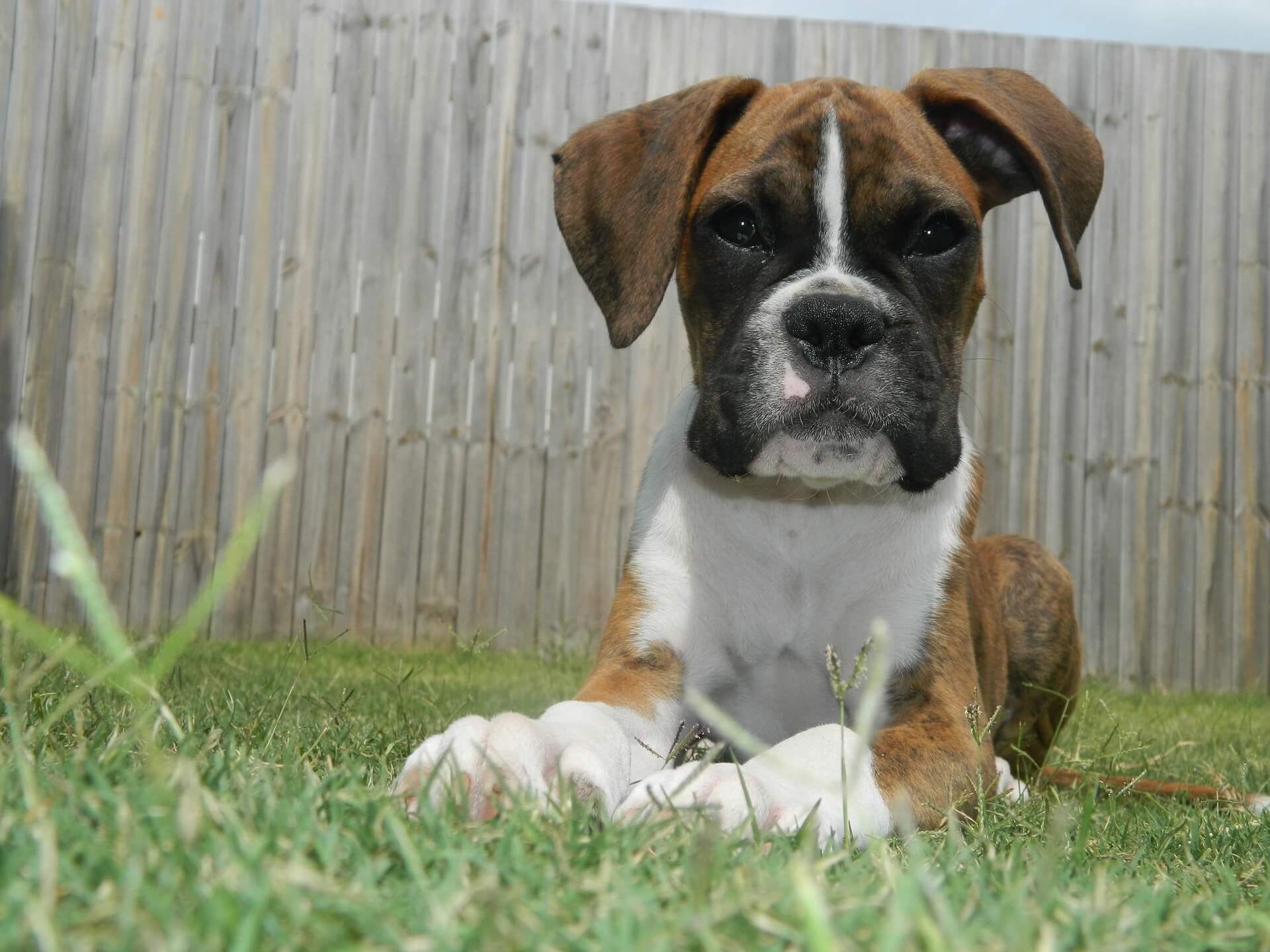
Flocki's sister was a white puppy that is considered today to have the most influence on the development of the modern breed. She was bred with one of the grandsons of Lechner’s Box and produced a puppy called Meta von der Passage, and she is considered to be the mother of the modern-day Boxer breed.
A famous canine historian called John Wagner wrote a book called “The Boxer” in 1939, and he claims that most of the big show dog winners and praised modern Boxers can be tracked to Meta von der Passage.
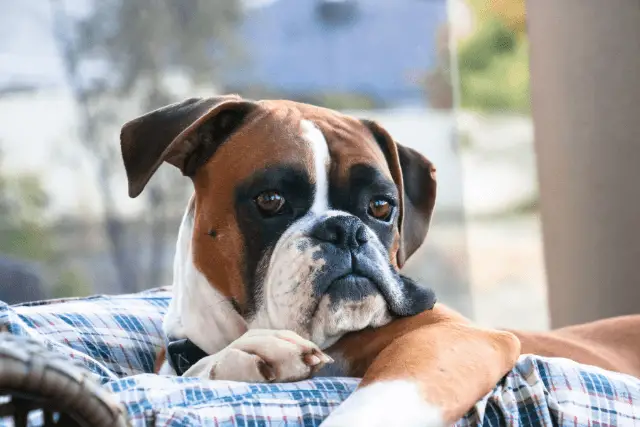
In 1894, German dog breeders decided to standardize the breed, and they entered their dogs in the 1895 Munich dog show, and a year after that, they helped in creating the Boxer Club. The breeders' names were Roberth, Konig, and Hopner.
The Boxer breed became popular across Europe at the very end of the 19th and the beginning of the 20th century, and soon, the first Boxers were imported to the US. In 1915 the American Kennel Club crowned the first Boxer champion by the name of Sieger Dampf v Dom, who was owned by the Governor of New York and his wife. Unfortunately, there weren’t many female Boxers in the US, and Sieger did not have a big influence on the breed as we know it today.
The modern breed played a big role in the military efforts in World War I and was mostly used as messengers, carriers, and attacking, and guard dogs.
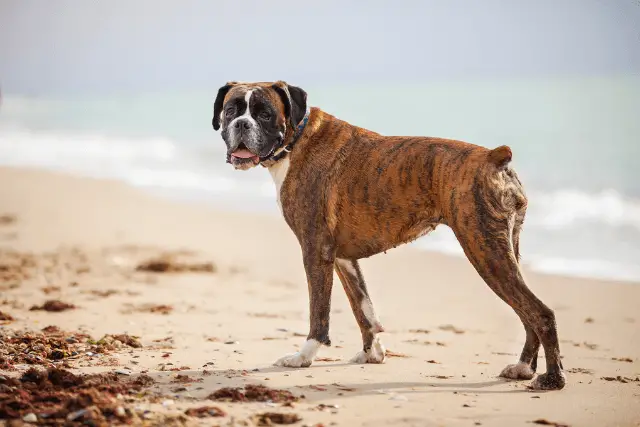
The biggest rise in popularity for this breed happened after the end of World War II when US soldiers returned from Europe with these dogs as their mascots. Soon this breed became popular across the country and became a favorite show dog, family pet, and even a guard dog.
The American Boxer Club started its work in 1935 and was immediately accepted by the American Kennel Club. There were problems at the beginning since the members of the Club could not agree on the breed standard and it took them over 3 years to decide which traits and characteristics should be desirable and promoted.
The modern-day Boxer ranks in the top 10 most popular dog breeds in the USA for many years in a row.
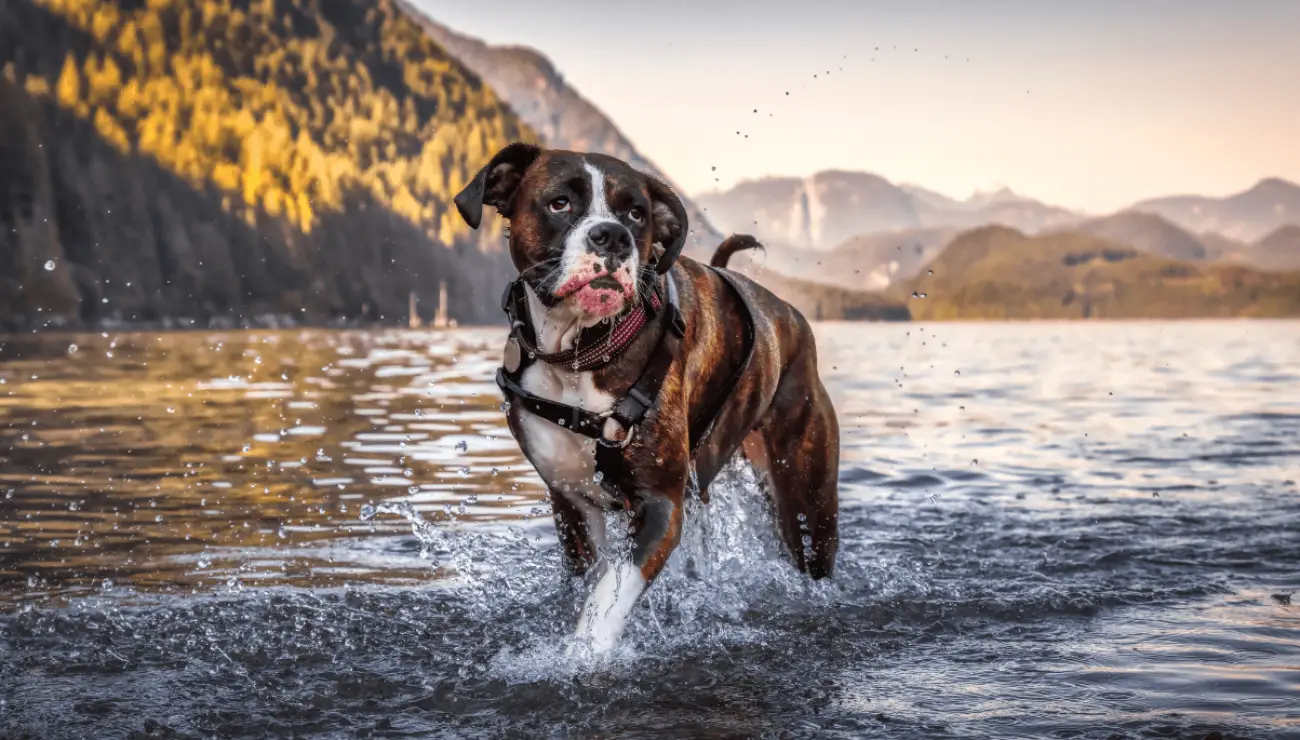
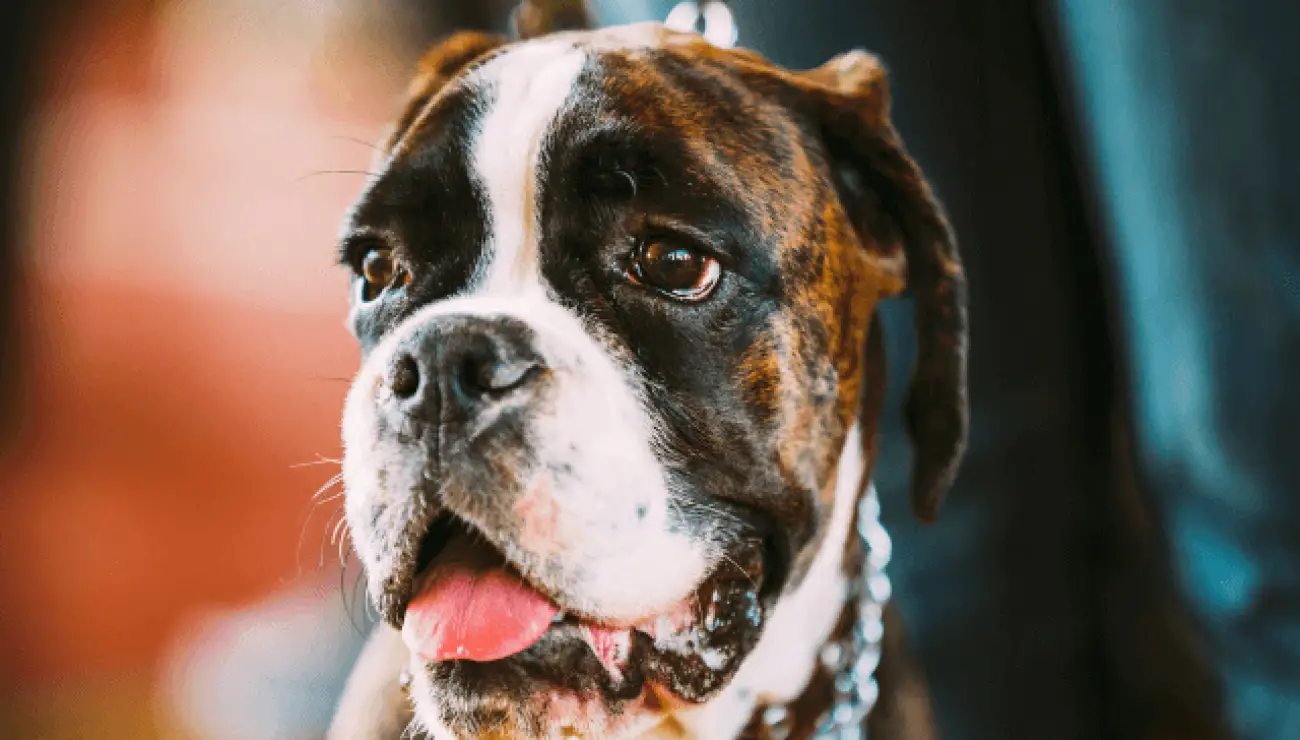
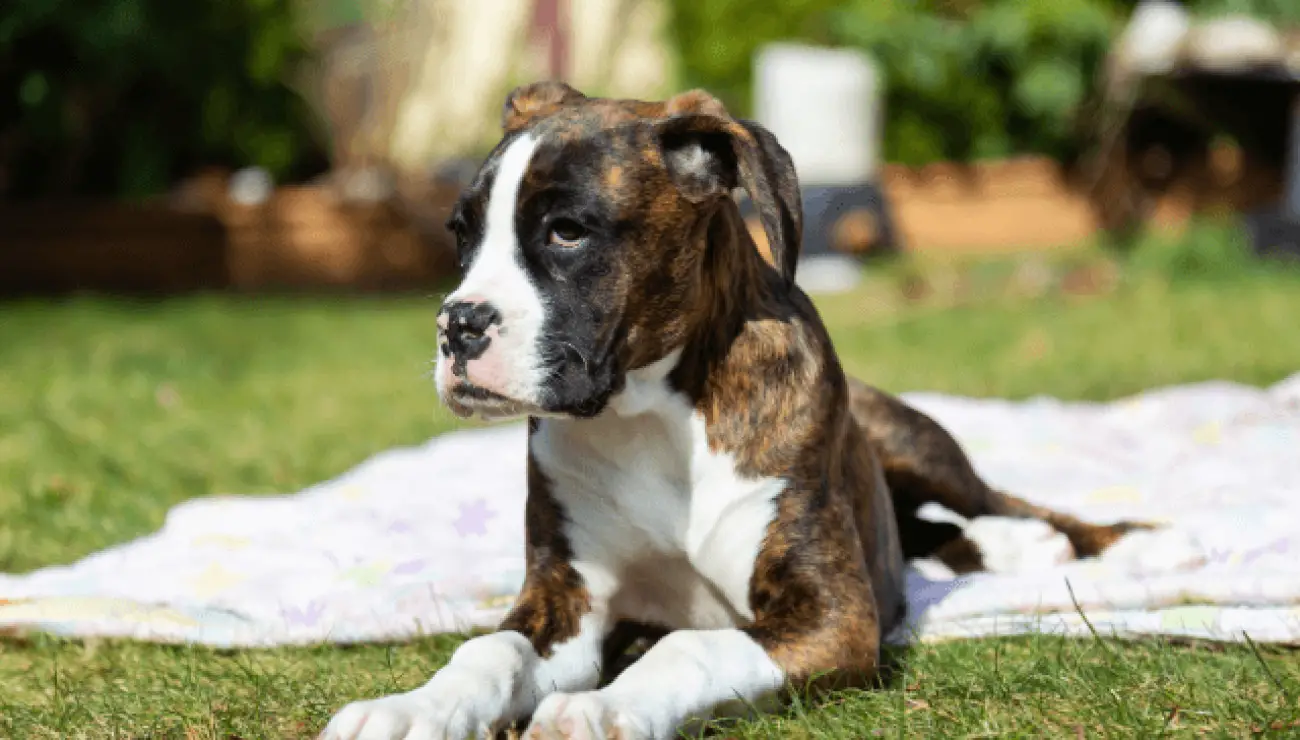
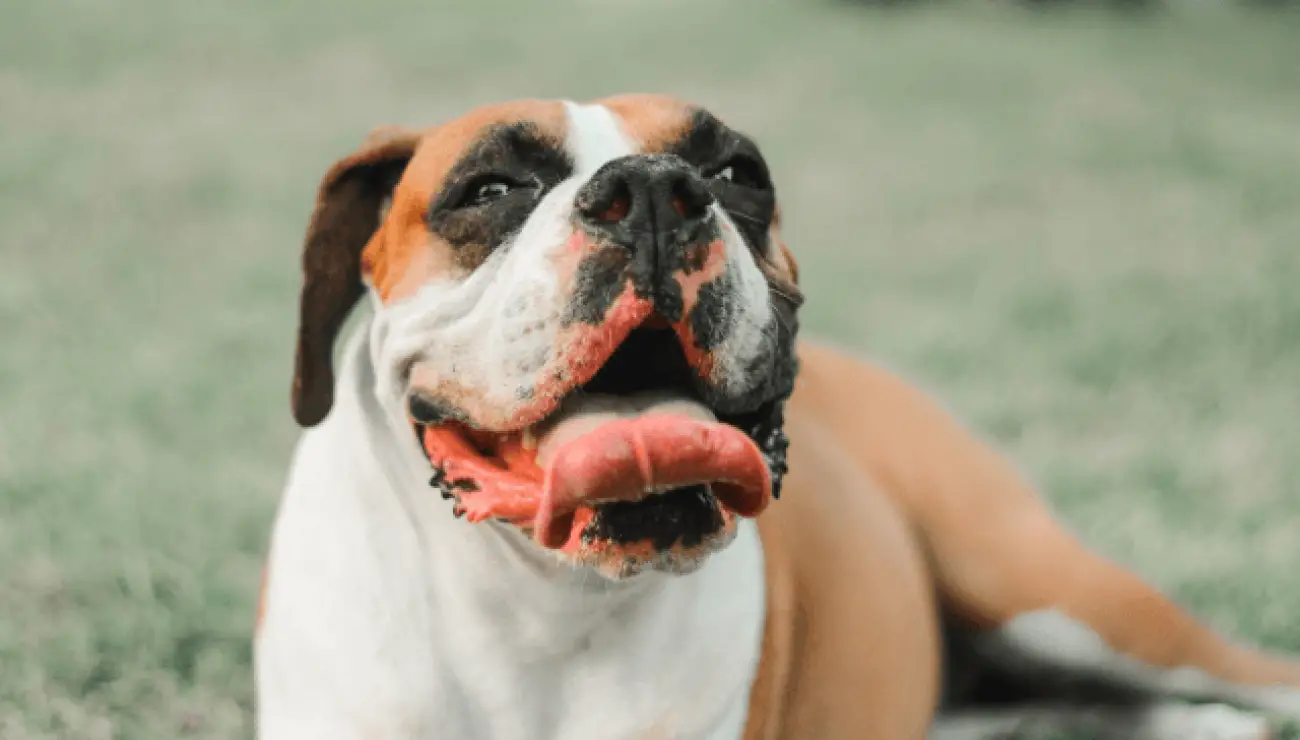
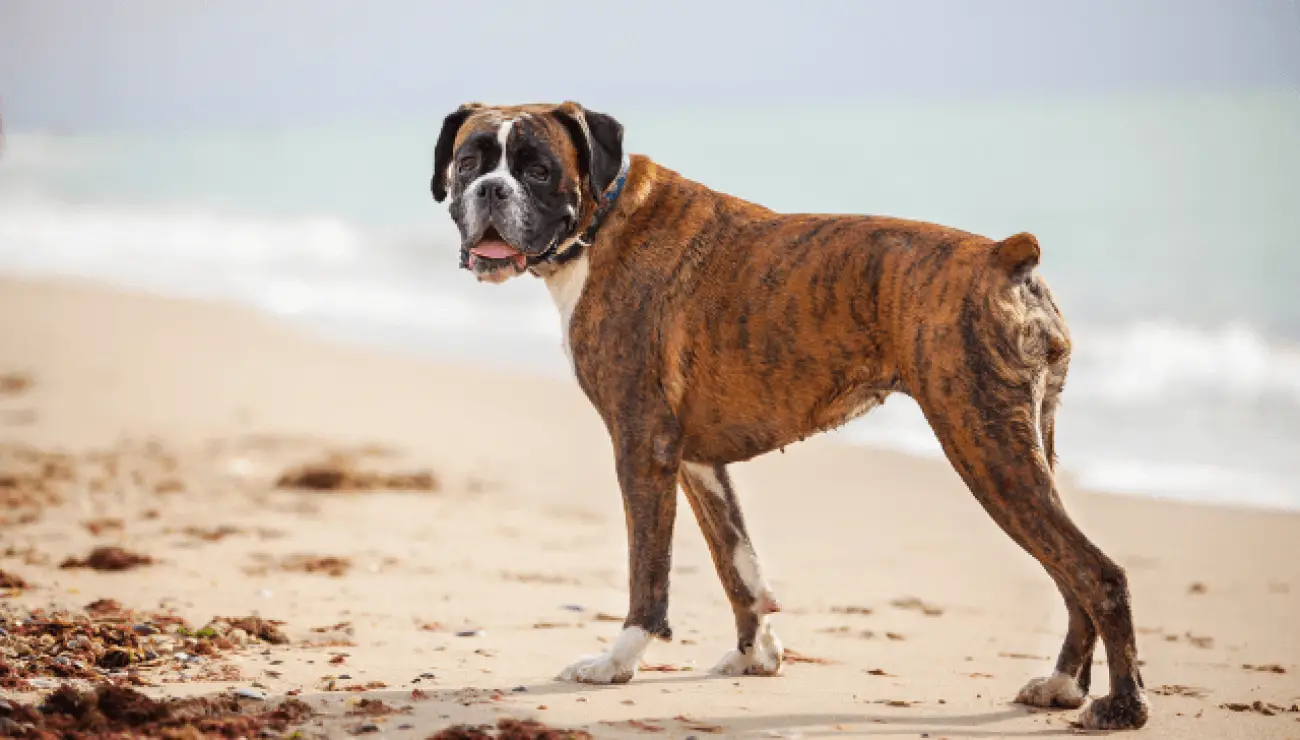
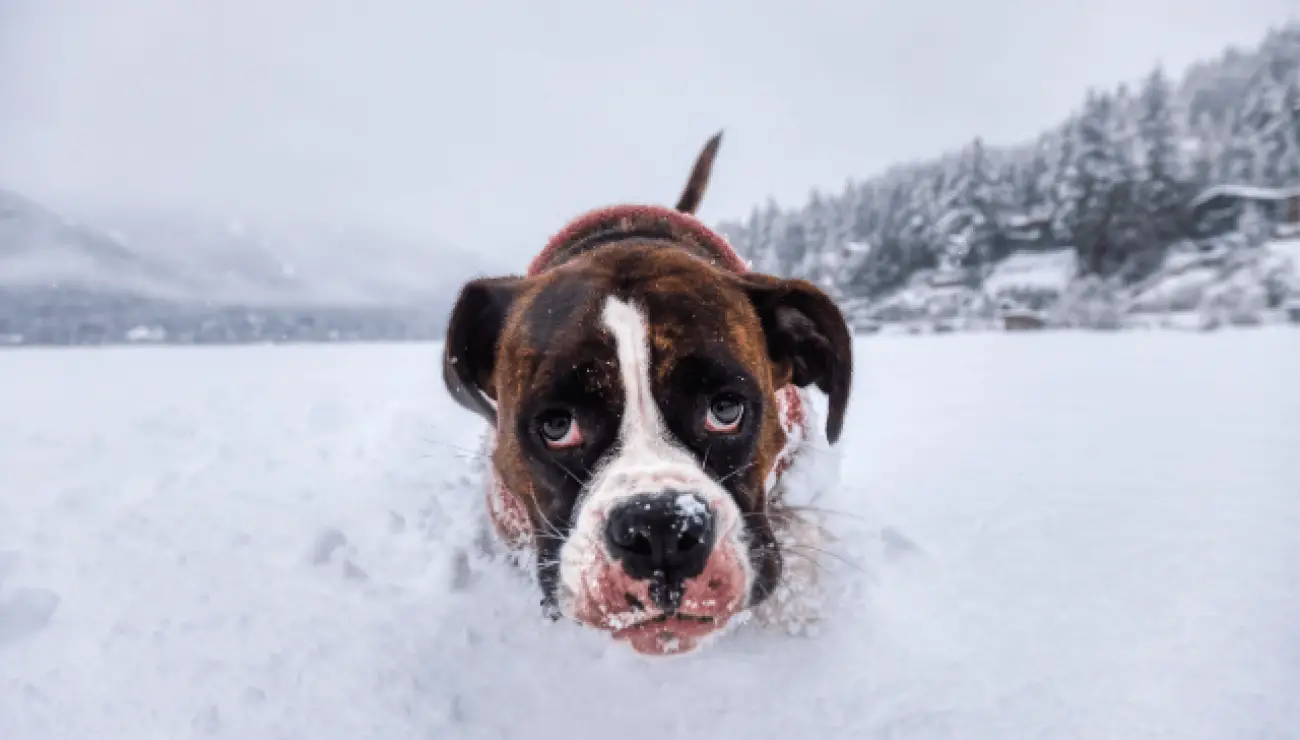
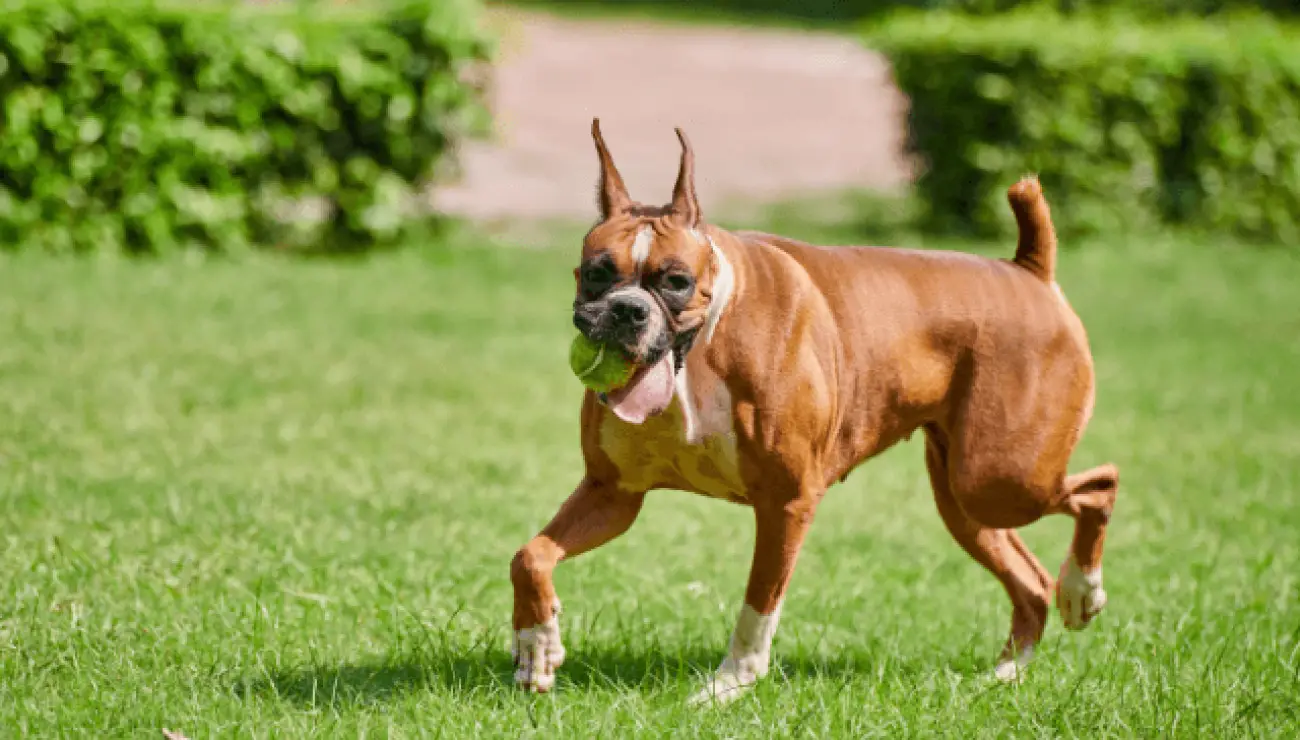

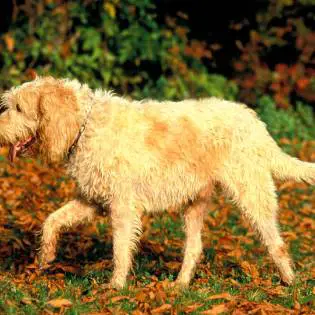
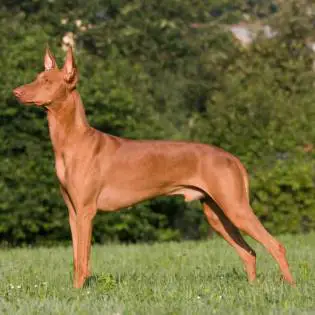



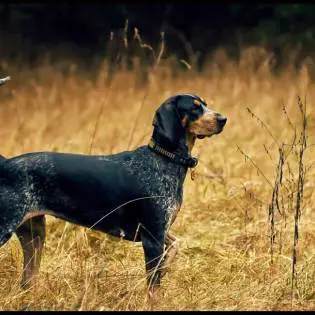
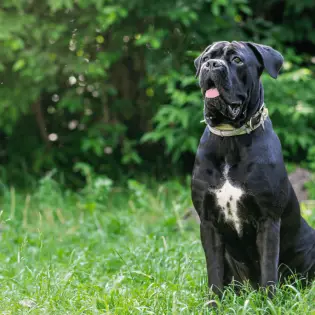
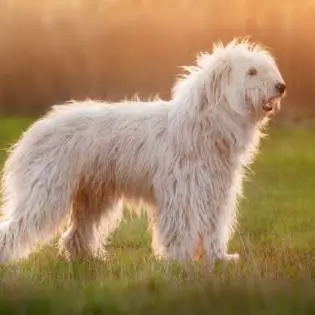


Share